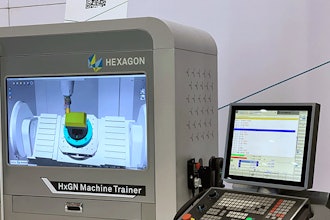Human Space Pods
Back in March, space tourism company Zero 2 Infinity announced that they were taking their balloon-based flight concept and expanding it into the commercial satellite launching business with Bloostar. I feared that the news meant that the company was abandoning plans to take space tourists to the edge of the Earth's atmosphere in large pods tied to huge balloon. It turns out that the company not only remains committed to space tourism, but they just unveiled the final design of the Bloon pod.
Over the course of the last nine months, the company worked with the Elisava School of Design and Engineering on the interior design of the pressurized pod.
Bloon rides could be operational within the next two years, and to gain some insight on the user experience, six student designers on the project locked themselves in a 12 square meter space for six hours, about two hours longer than the expected duration of the flight that will carry four passengers and two pilots nearly 22.5 miles (36 km) above the earth's surface — 1.5 to climb, two hours of viewing, and then a one-hour return. During the return, the pod will actually detach from the balloon and allow passengers to experience free fall and zero gravity before the parachute engages.
The design is a modular space five meters in diameter. The pod will have reclinable and movable seats, washbasins, floors and walls built with soft materials. And the windows will be smart, so you can actually use applications in the windows to listen to music, or locate places on Earth, for example.
Tickets for a trip in a Bloon pod will cost more than $125,000 (€110,000).
Robot Withstands Massive Levels of Radiation
The cleanup effort at Japan's Fukushima nuclear plant has had some robot problems. Since the radiation levels in some areas are enough to kill a person instantaneously, officials working on decommissioning the plant need to rely on robots to assess a lot of the damage. The problem is, until now, the robots were not working. Back in March, the remote-controlled "scorpion" robot ran into trouble when it was blocked from accessing a core area by a mixture of melted fuel and broken structure. In February, a cleaning robot only lasted two hours before the radiation caused camera problems.
The head of de-commissioning said it was time to think outside the box, and it looks like the newest robot, "the Little Sunfish," could have some success.
The little sunfish is an underwater robot co-developed by Toshiba and the International Research Institute for Nuclear Decommissioning that is about the size of a loaf of bread. It has lights, two cameras, a dosimeter to measure radiation, and uses five propellers to get around. It's controlled by four operators, and in a recent mission, it was able to inspect structural damage without succumbing to the very high levels of radiation.
It was a rare win for Tokyo Electric Power Company, which has struggled with the cleanup effort since it was crippled by a massive earthquake and tsunami in March 2011.
Engineers Use Giant Balloons to Build Research Facilities
Polar engineers in Greenland are blowing up massive balloons under to snow to build structurally strong underground tunnels. It's an interesting solution to structural problems that have plagued research facilities in some of the world's coldest regions. A lack of materials and limited infrastructure can often lead to underground tunnels that cave in.
According to a new article in Science, this new technique was developed by a physicist from the University of Copenhagen. It starts by cutting a trench with snow blowers. Then they blow up a balloon that is up to 40 m long and fit it into the trench, and cover it up with snow. Once the snow hardens, they deflate the balloon, and they're left with a tunnel that can be used as a shop or a shelter.
Because of the cylindrical shape, the rooms are structurally stronger, and contract slower than rectangular ceilings that are shored up with wooden beams, for example. But were talking a 2 cm improvement. A study showed that the balloon tunnels contract at 25 cm per year compared to 27-cm per year of traditional rectangular shapes. The difference seems negligible until you put yourself in their shoes, and you think about what it would be like to live and work in an environment where the walls were literally closing in on you.
Not only is the technique more environmentally friendly, but it's cheaper, which is likely a big selling point for researchers in remote areas.
This is Engineering By Design with David Mantey.






















